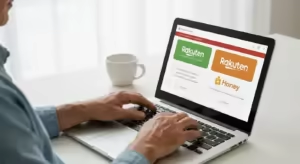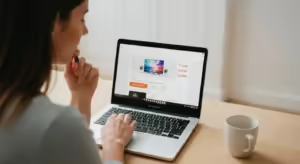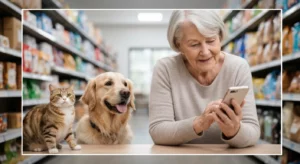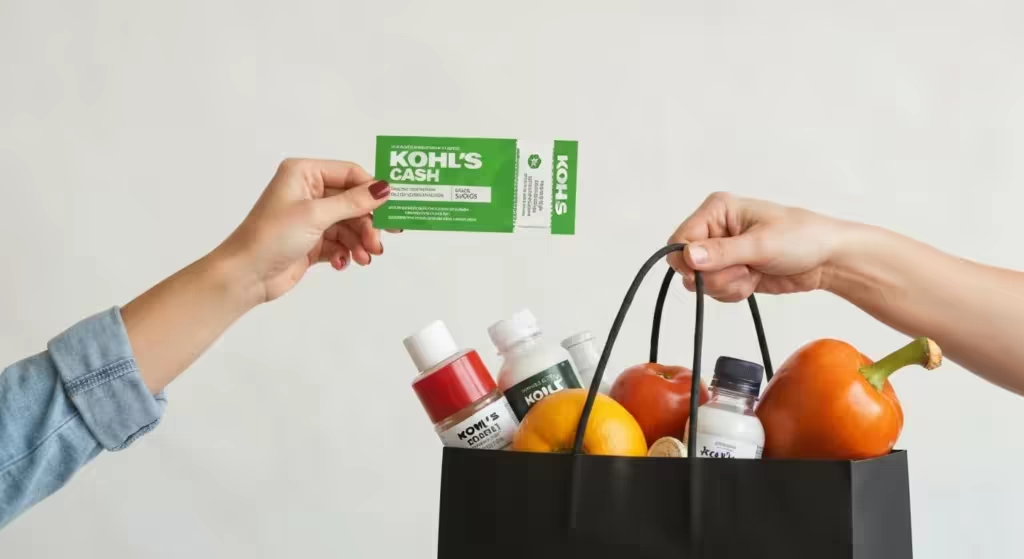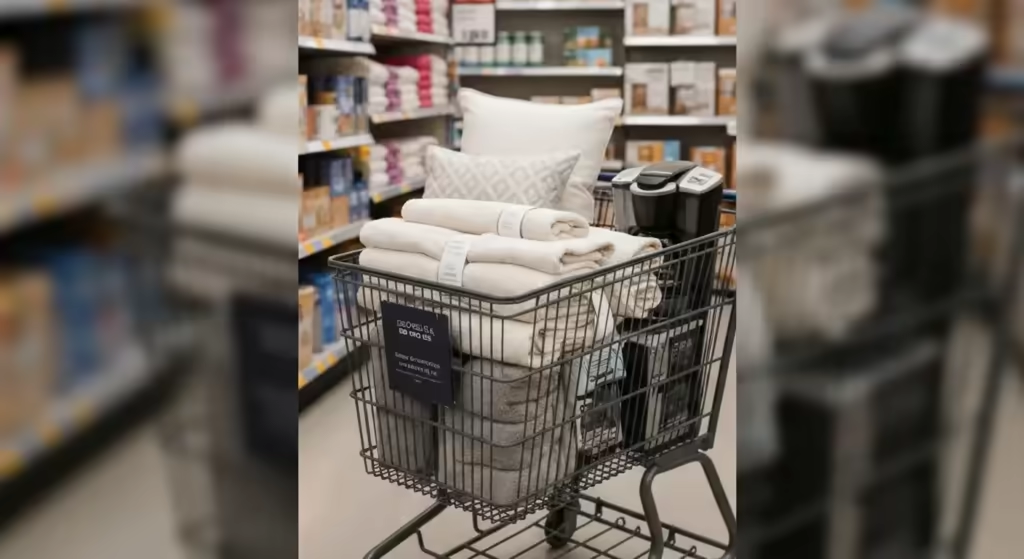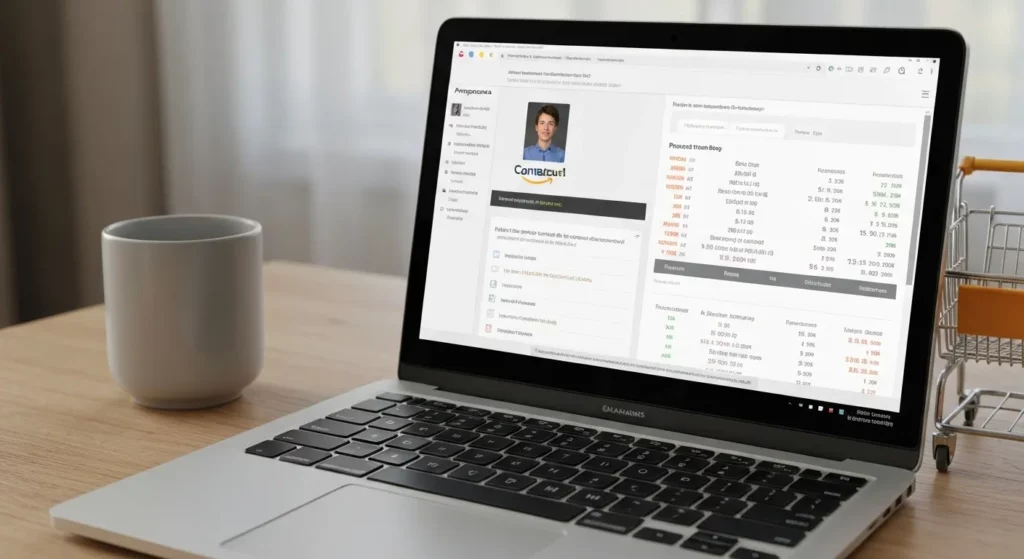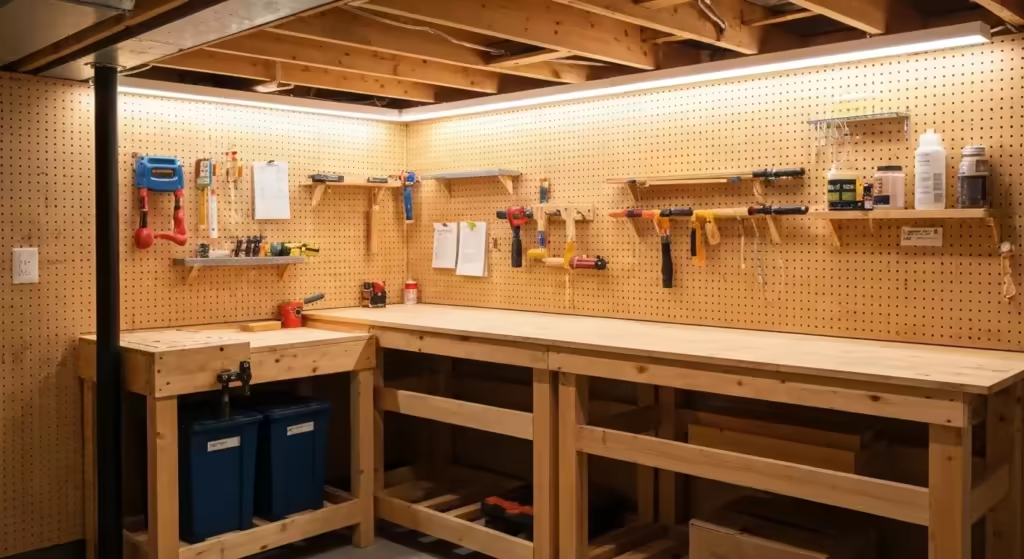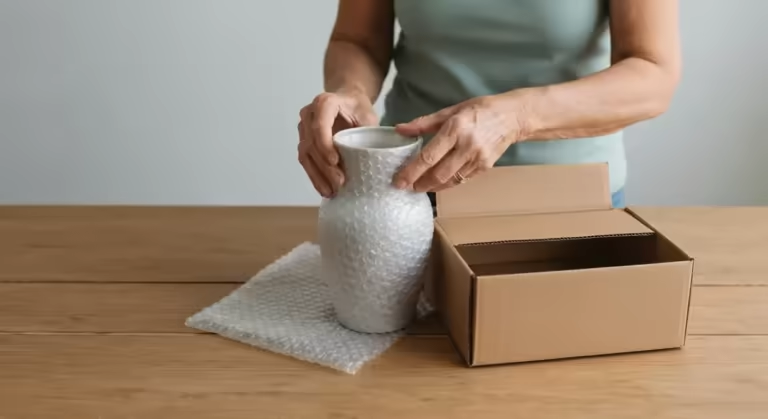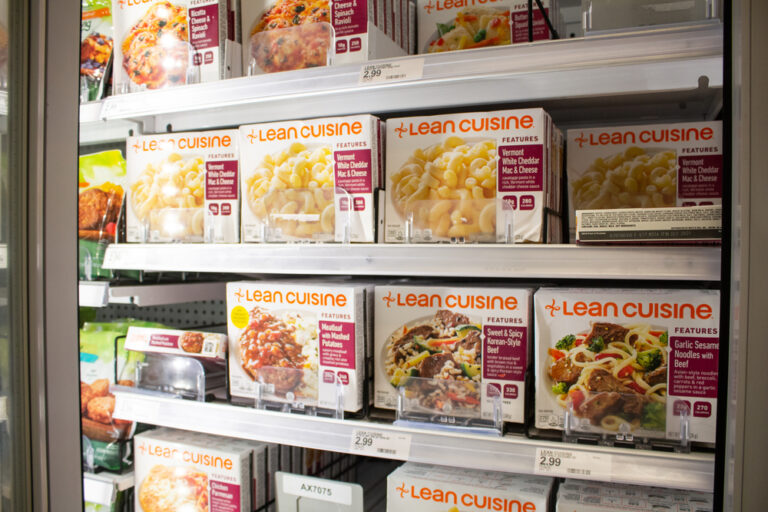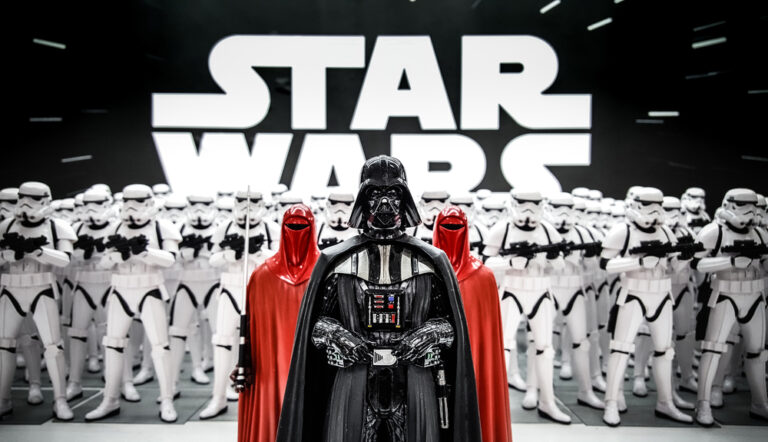I remember the exact moment the panic set in. I was sitting at my kitchen table, a stack of bills on one side and my retirement account statement on the other. For years, I’d planned and saved, thinking I had it all figured out. But inflation, unexpected home repairs, and the rising cost of just about everything had started to eat away at my carefully constructed budget. The numbers weren’t adding up, and the comfortable nest egg I’d envisioned felt more like a flimsy basket, threatening to unravel.
That feeling of helplessness was terrifying. I’ve always been a proud and independent person. I worked hard my whole life, raised a family, and managed my finances responsibly. To suddenly feel like I was losing control was a bitter pill to swallow. I knew I needed to do something, to find a way to stretch my dollars and regain some breathing room without making drastic sacrifices to my quality of life.
My son, ever the tech enthusiast, suggested I look into cashback apps. “Mom, you can get money back on stuff you’re already buying,” he said, scrolling through his phone. I was skeptical, to say the least. It sounded too good to be true, like one of those “get rich quick” schemes. My initial thought was, “Why would anyone just give me money?” But desperation can be a powerful motivator. So, I decided to dive in, armed with a healthy dose of cynicism and a desperate need for results. What followed was a journey of frustration, discovery, and ultimately, empowerment. This isn’t a generic review of apps; this is my story—the real, unfiltered experience of finding the top cashback apps that actually pay out fast and helped me take back control of my finances.
-
My Wake-Up Call: Why I Desperately Needed to Stretch My Retirement Budget
The wake-up call wasn’t a single event, but a slow, creeping realization. It started with the grocery bill. I’d been shopping at the same store for two decades. I knew the layout by heart, I knew the prices, and I had my routine down to a science. But one Tuesday, I went through the checkout line and the total was $167. I nearly gasped. My usual bill for the same basket of goods was closer to $120, maybe $130 on a bad week. I double-checked the receipt right there at the counter, a flush of embarrassment rising in my cheeks as the line grew behind me. There were no mistakes. Everything—the milk, the eggs, the chicken, even the bread—had just… gone up.
That feeling of sticker shock started happening everywhere. The gas station pump clicked past $60 to fill my tank. A prescription co-pay I thought was fixed had increased by $15. It felt like I was being nibbled to death by a thousand tiny price hikes. My fixed income, which had seemed so solid and reliable on paper, was shrinking in real-world value before my very eyes. I started cutting back. I canceled a magazine subscription. I thought twice about meeting friends for lunch. Each small cutback felt like a loss of freedom, a chipping away at the retirement I had worked so hard to enjoy.
The real turning point was a conversation with my granddaughter. She was performing in her school’s spring musical, and I’d promised her I’d be there. It was a three-hour drive, which meant gas, a cheap motel for one night, and a meal or two. As I started to budget for it, I felt a knot form in my stomach. The trip was going to cost nearly $300. A few years ago, I wouldn’t have blinked. Now, I found myself weighing the cost against my other essentials. Could I really afford it? The thought that I might have to tell her I couldn’t come was devastating. It was in that moment I knew I couldn’t just keep cutting back. I had to find a new way to supplement my income, even in a small way. I had to be proactive. That’s when my son’s words about cashback apps echoed in my head. My skepticism was still there, but it was now overshadowed by a fierce determination. I wasn’t just looking for a few cents back; I was fighting for my ability to show up for the people I love. That was the fuel that started my entire journey.
-
The “Cashback Graveyard”: My First Frustrating Forays into Apps That Never Paid Out
With my newfound motivation, I dove headfirst into the world of cashback apps. I went to the app store on my phone and typed in “cash back.” The screen was flooded with brightly colored icons, all promising easy money. I felt a surge of optimism and downloaded the first three that looked promising. And that’s when I entered what I now call my “cashback graveyard.”
The first app I tried, let’s call it “CouponClutter,” was a nightmare. It required me to “clip” dozens of digital coupons before I shopped, then scan a barcode at the register, and finally upload my receipt. The first time I tried it, I held up the checkout line for five minutes fumbling with my phone, only for the cashier to tell me she had no idea what I was talking about. I ended up paying, flustered, and tried to upload the receipt later. The app told me it was “processing.” A week later, it was still processing. I never saw a single cent from that shopping trip.
The second app, “Pay-Me-Later,” seemed simpler. I just had to link my credit card and it would automatically detect purchases. “Great!” I thought. “This is easy.” I used it for a few weeks, making my usual purchases. I saw a balance slowly accumulating in the app—$1.25 here, $0.80 there. After a month, I had a grand total of $7.40. I went to cash out and was hit with a brick wall: the minimum payout threshold was $25. At my rate of earning, it would take me more than three months to get my money. It felt like a bait and switch. The “fast rewards” I was looking for were locked behind a digital wall I couldn’t climb anytime soon. I felt foolish and duped.
My frustration peaked with the third app. This one involved taking surveys. “Earn up to $5 for a 15-minute survey!” the ad proclaimed. I spent twenty minutes diligently answering questions about my breakfast cereal preferences, only to be disqualified on the very last question. A pop-up cheerily informed me, “Sorry, you’re not a fit for this survey, but here are 2 points (worth $0.02) for your time!” I stared at the screen in disbelief. I had just wasted twenty minutes of my life for two pennies. I deleted all three apps from my phone in a fit of pique. I felt like I had proven my own cynicism right. This whole thing was a scam, a time-wasting, frustrating gimmick. I was ready to give up entirely and just resign myself to my tight budget. The cashback graveyard on my phone was a testament to my failure, and the feeling of hope I’d had was completely gone.
-
The Game Changer: Discovering Ibotta and the Thrill of My First Real Payout
After a week of stewing in my frustration, I decided to give it one last try. I complained to my son about my experience, and he listened patiently before saying, “Mom, you were using the wrong apps. You need ones that are built for how you already shop. Try Ibotta. Just try it for one grocery trip.” Reluctantly, I agreed. I downloaded it, still filled with skepticism, but I was determined to follow the process to the letter this time.
Before my next trip to the supermarket, I sat down and opened the Ibotta app. The difference was immediately apparent. Instead of vague promises, it listed specific offers for products at my specific grocery store. I saw “50 cents back on any brand of milk,” “75 cents back on my favorite brand of coffee,” and “$1.00 back on a specific brand of pasta” I often bought. It felt concrete and real. I spent about ten minutes scrolling through the list and adding offers for things that were already on my shopping list. It didn’t feel like a chore; it felt like planning. It felt like I was arming myself before heading into battle with the high grocery prices.
At the store, I shopped as I normally would, simply making sure to pick up the specific items I’d selected in the app. When I got home, I opened Ibotta, selected “Redeem,” and it prompted me to take a picture of my receipt. I laid the long receipt out on my kitchen counter, smoothed it flat, and snapped a photo. The app’s technology scanned it, and within about 30 seconds, a notification popped up: “You’ve earned $6.75!”
I stared at the screen. Six dollars and seventy-five cents. It wasn’t a million dollars, but it was real. It was money back in my pocket from a single shopping trip, on items I was going to buy anyway. The feeling was electric. It was a jolt of victory, a tangible result that flew in the face of my previous failures. The best part? The minimum payout threshold was $20, which felt achievable. Over the next two weeks, I used it on two more grocery runs. I bought some household supplies at a big-box store and got another $4 back. In less than three weeks, my Ibotta balance was $21.50. With trembling fingers, I navigated to the “Withdraw” screen and linked my bank account. I clicked the button to transfer the funds. The app said it could take 1-3 business days. I was still nervous. The next morning, I checked my bank account online. There it was: “Deposit from Ibotta: +$21.50.” I actually laughed out loud. It was real. This worked. That small deposit wasn’t just money; it was proof. It was the moment I realized that getting paid quickly using cashback apps was possible. I just needed the right tool and a little bit of strategy.
-
Learning a Different Kind of “Fast”: My Experience with Rakuten’s Big Fat Check
Buoyed by my success with Ibotta, I grew bolder. I started thinking about purchases beyond groceries. My old vacuum cleaner had been on its last legs for months, making more noise than it was sucking up dirt. I knew I needed a new one, and it was going to be a significant expense. This time, instead of just bracing for the cost, I wondered if my newfound cashback habit could help. This led me to Rakuten (which some of my friends still call by its old name, Ebates).
I learned quickly that Rakuten worked differently from Ibotta. It wasn’t about scanning receipts for specific items. It was for online shopping. You start your shopping trip on the Rakuten website or app, click their link to the store you want (in my case, Kohl’s), and then you shop as you normally would on the store’s site. Rakuten gets a commission from the store for sending you there, and they share a piece of that commission with you. For my vacuum purchase, Kohl’s was offering a whopping 10% cash back through Rakuten.
The process was simple. I installed the Rakuten browser extension on my computer, which was a huge help. When I went to Kohls.com, a little pop-up appeared: “Activate 10% Cash Back.” I clicked it, and that was it. I found the vacuum I wanted, applied a 20% off coupon code I had, and paid with my credit card. My total for the vacuum was about $200. A few hours later, I got an email from Rakuten: “Your Cash Back is on its way! You’ve earned $20.00.” Twenty dollars! Just for one click!
Here’s where I learned about a different kind of “fast.” Rakuten doesn’t pay out instantly. They pay out on a set schedule, once every three months. They call it the “Big Fat Check” (or Big Fat Payment now that it’s usually digital). My first thought was, “Oh no, another waiting game.” But this felt different from the app with the high, arbitrary payout threshold. This was a predictable, reliable system. I knew exactly when my payment was scheduled to arrive. It wasn’t “fast” in the sense of being instant, but it was “fast” in the sense of being dependable and certain. There was no guesswork. I made that purchase in April, and I knew my payment would come in mid-May. It taught me an important lesson: “fast rewards” can mean different things. Sometimes it means instant gratification after a grocery run. Other times, it means a reliable, lump-sum payment you can count on. And when that deposit for over $50 (from the vacuum and a few other online purchases) hit my PayPal account in May, it felt just as good as any instant reward. It was a substantial amount that I immediately put toward my trip to see my granddaughter.
-
Simplicity is King: How Fetch Rewards Made Earning Effortless
While I was getting the hang of Ibotta for groceries and Rakuten for online shopping, I still felt there was a gap. Sometimes I was just too tired or too busy to pre-plan my shopping by scrolling through offers. I wanted something that required almost zero mental energy. That’s when I discovered Fetch Rewards, and it truly changed the game for me in terms of consistency.
The beauty of Fetch is its sheer, unadulterated simplicity. There are no coupons to clip. There are no specific store offers to activate. You just shop, and then you take a picture of your receipt. Any receipt. From any store. Groceries, gas stations, restaurants, hardware stores, you name it. If it’s a receipt, Fetch will give you points for it. Of course, you get more points if you buy specific brands they partner with, but you are guaranteed a minimum number of points for every single scan.
This became my new habit. I’d come home, unpack my bags, and before I threw the receipt away, I’d open the Fetch app and snap a picture. It took less than ten seconds. It was so easy, it almost felt like cheating. I didn’t have to think. I didn’t have to plan. I just had to remember to take the picture. I put a little sticky note on my fridge that said “FETCH!” to remind me for the first couple of weeks, and soon it became second nature.
The points added up slowly but surely. 25 points here for a coffee receipt, 150 points there from the grocery store, 500 points for buying a particular brand of ice cream that was on special. I wasn’t earning huge amounts on any single receipt, but the consistency was amazing. It was a slow and steady trickle that constantly grew. After about two months of casual scanning, I checked my balance and saw I had over 10,000 points. I browsed their rewards catalog and saw that I could get a $10 Amazon gift card for 10,000 points. I clicked redeem, and within seconds, a gift card code appeared right in the app. It was instant. I immediately applied it to my Amazon account. The lesson here was profound: The best cashback app is the one you will actually use. The sheer simplicity of Fetch meant I used it every single day, and those tiny earnings compounded into a real, tangible reward that I used to buy a new book I’d been wanting. It wasn’t a life-changing amount of money, but it was a delightful, effort-free bonus.
-
Fueling My Savings: The Unexpected Windfall from Using Upside at the Gas Pump
Gas prices were my biggest source of anxiety after groceries. Watching that number on the pump climb higher and higher felt like a direct assault on my freedom to go where I wanted, when I wanted. My trip to see my granddaughter’s play was looming, and the cost of fuel was the single biggest expense. I had heard about gas cashback apps but was skeptical. How could they possibly give you money back on gasoline, a product with already thin margins? My son mentioned one called Upside, and I decided to investigate it specifically for my trip.
I downloaded Upside and was surprised by its interface. It showed me a map of my local area with participating gas stations. Each one had a little tag showing how much cash back I could get per gallon—8¢ here, 15¢ there, sometimes as high as 25¢ if there was a promotion. The process seemed straightforward: you “claim” an offer for a specific gas station, go there within a few hours, fill up your tank, pay with a linked credit or debit card, and check in on the app. No receipt scanning needed for most major stations.
Before my trip, I planned my route. I looked at the map on Upside and saw there were participating stations all along the highway. I made a point to select my fuel stops based on which stations offered the best cash back. My first stop was about an hour into my drive. I claimed an offer for 18¢ back per gallon. I filled up my tank, paid with my linked card, and as I was pulling back onto the highway, my phone buzzed. A notification from Upside: “Cash back processing for your fill-up at Shell.” Two days later, the money—about $2.70 for that one fill-up—was confirmed in my app.
I did this for every fuel stop on my trip, both there and back. It became a fun little game, trying to maximize my savings. By the time I got home, I had accumulated over $12 in cash back just from the gas for that one trip. It may not sound like a fortune, but it was significant. That was the cost of a nice lunch, completely offset by being strategic about where I bought gas. Upside also works for some restaurants and grocery stores, but for me, its power is at the pump. The lesson was clear: even on fixed-price necessities like gasoline, there are ways to save. You just have to be willing to look. That $12 didn’t just feel like money; it felt like I had outsmarted the system. It reduced the cost of a very meaningful trip and gave me a powerful sense of control over an expense that had previously felt completely out of my hands.
-
The Passive Income Experiment: Overcoming My Skepticism with Data-Sharing Apps
As I got more comfortable in the cashback world, I started hearing about a different category of apps. These didn’t require scanning receipts or clicking links. They promised to pay you for, essentially, doing nothing. Apps like Pogo and Bridge Money work by connecting to your bank or credit card accounts and anonymously analyzing your purchase data. In return for sharing this information, they give you small amounts of cash or points.
I’ll be honest, this one gave me pause. As someone from a generation that was taught to shred bank statements and guard our financial information fiercely, the idea of voluntarily linking an app to my bank account felt deeply unsettling. What if they got hacked? What were they doing with my data? My initial reaction was a hard “no.” It felt like a violation of privacy, a step too far in the pursuit of a few extra dollars.
But my curiosity got the better of me. I spent a whole evening reading their privacy policies, poring over user reviews, and researching the companies themselves. I learned that they use bank-level encryption and that the data they collect is anonymized and aggregated, meaning my personal identity is separated from my spending habits. They aren’t interested in *me*, Jane Doe, but in the spending patterns of, say, 10,000 people in my demographic. It was a trade-off: a little bit of anonymized data in exchange for a completely passive stream of income. I decided to dip my toe in, not my whole foot. I linked a single credit card that I used for smaller, everyday purchases, not my main checking account. This was my personal “safety net.”
The result was fascinating. I downloaded Pogo, linked my card, and then… forgot about it. A week later, I opened the app and saw I had accumulated 300 points (worth $0.30). It came from my coffee purchase, my drugstore run, and a small online order. I didn’t have to do anything. The app just saw the transactions and awarded me points. It was the definition of effortless. It’s not a lot of money—I probably only make a few dollars a month this way—but it’s the ultimate “set it and forget it” system. This experiment taught me a crucial lesson about risk and reward. It’s essential to be cautious and do your research, especially when it comes to financial data. But it also taught me that modern technology, when understood and used carefully, can offer new avenues for earning. For me, the key was setting my own boundaries (linking only one card) to overcome my initial fear and turn skepticism into a small but satisfying passive reward.
-
Stacking and Strategy: The Day I Realized I Could Combine Offers for Maximum Impact
After a few months, I felt like I had graduated from being a rookie to a seasoned pro. I had my favorite apps, and I had my routine. Ibotta for groceries, Rakuten for online, Fetch for everything, and Upside for gas. I was feeling confident. But then came the day I had an epiphany—a moment when I realized these tools didn’t have to exist in separate silos. I could make them work together.
The moment of truth happened during my weekly grocery trip. The store had a sale on a specific brand of laundry detergent: $2 off the regular price. I checked my Ibotta app, and to my delight, there was an additional $1.50 cash back offer for that exact same detergent. That was already a great deal—a total of $3.50 in savings. But then I remembered something else. I had received a manufacturer’s coupon in my Sunday paper for $1.00 off that brand.
A lightbulb went on in my head. Could I… use all three? The store sale was automatic. At the checkout, I handed the cashier my paper coupon. She scanned it, and $1.00 was deducted from my total. I paid the remaining balance. So far, so good. When I got home, with a little flutter of anticipation, I opened Ibotta and scanned my receipt. The app recognized the purchase, and a few minutes later, $1.50 landed in my account. I had successfully “stacked” three different discounts on one item. The detergent, which was normally $9.99, ended up costing me just $5.49. I felt like a financial genius.
This opened up a whole new level of strategy for me. I started looking for these stacking opportunities everywhere. I’d buy something online from a store having a sitewide sale (Discount 1), go through my Rakuten portal to get cash back (Discount 2), and pay with a credit card that offered its own rewards points (Discount 3). When I bought new tires for my car, I went to a shop that was partnered with Upside for 5% cash back, and I paid with a card I had linked to Pogo, earning passive points on the large transaction as well.
This was the ultimate lesson in proactivity. Being a smart consumer wasn’t just about using one tool; it was about understanding how all the tools in my toolbox could work in concert. It transformed my shopping from a passive act of spending money into an active, engaging strategy of maximizing value. It was no longer just about saving money; it was a puzzle to be solved, and every time I successfully stacked a deal, it was a small, deeply satisfying victory.
-
It’s Not Just About the Money: The Psychological Boost of Taking Control
As the months went on and I saw my cashback balances grow, I started noticing a change in myself that had nothing to do with the numbers in my bank account. The constant, low-grade anxiety I had felt about money began to dissipate. That feeling of helplessness I experienced at my kitchen table that first day was replaced by a quiet confidence. I was no longer a passive victim of rising prices; I was an active participant in my own financial well-being.
Every time I scanned a receipt with Fetch, claimed a gas offer with Upside, or saw cash back confirmed from Rakuten, it was more than just a financial transaction. It was a small affirmation that I was being smart, resourceful, and proactive. It was a reminder that I had taken a problem that seemed overwhelming and broken it down into small, manageable actions that were yielding real results. This psychological boost was, in many ways, more valuable than the money itself.
I found myself talking about it with my friends. One of my walking partners, Martha, was complaining about the cost of her husband’s favorite coffee. I pulled out my phone, opened Ibotta, and showed her a $1.00 offer for that exact brand. Her eyes lit up. I walked her through downloading the app and how to use it. A week later, she called me, excited, to say she’d gotten her first $5 back. Being able to share this knowledge, to help someone else feel that same sense of empowerment, was incredibly rewarding. It turned my personal journey into something I could share, creating a sense of community and mutual support.
The biggest change was in my mindset. I stopped looking at my budget as a restrictive document, a list of things I couldn’t do. Instead, I started seeing it as a dynamic challenge. The cashback I earned became my “fun money” or my “grandkid fund.” It was separate from my fixed income, a little bonus I had earned through my own cleverness. This mental shift was liberating. It allowed me to enjoy my retirement without the constant guilt or worry over every little expenditure. I had learned that financial control isn’t about having millions in the bank; it’s about having a plan, using the tools available to you, and knowing that you are doing everything you can to make your resources work for you.
-
What I Did With My First $500 in Cashback: Turning Digital Points into Real-Life Memories
About eight months after I started my cashback journey, I decided to take stock. I went through all my apps—Ibotta, Rakuten, Fetch, Upside, and the others—and I tallied up everything I had earned and successfully transferred to my bank account. The grand total was $512.48. I looked at that number on my notepad and felt a wave of pride wash over me. Five hundred dollars. It was money that, a year ago, would have simply vanished into the ether of high prices. Now, it was sitting in my savings account, a testament to my persistence.
And I knew exactly what I was going to do with it. My granddaughter’s musical had come and gone—I had made that trip, partly funded by my initial earnings from Upside and Rakuten. But my grandson’s tenth birthday was coming up. He was obsessed with space and had been begging to visit the big science museum in the city, the one with the planetarium and the mock-up of the space station. It was an expensive outing—tickets, gas, food, and of course, the inevitable trip to the gift shop. Before, I would have hesitated. But now, I had my $512 fund.
I called my son and told him I was taking my grandson to the museum for his birthday, my treat. The delight in his voice was matched only by the absolute joy on my grandson’s face when I told him. We spent the entire day there. We watched a show at the planetarium that made us feel like we were flying through the stars. He “piloted” a Mars rover simulator. We ate overpriced hot dogs and ice cream, and I didn’t flinch at the cost. At the gift shop, I let him pick out a model rocket and a t-shirt with the solar system on it. His eyes were as wide as saucers the whole day.
Driving home, he was chattering away in the backseat about nebulas and black holes, clutching his model rocket. I looked at him in the rearview mirror, and it all clicked into place. This was the “why.” This was the whole point. The receipt scanning, the offer clipping, the strategic planning—it all led to this. It wasn’t about the $500. It was about what the $500 could do. It was about turning digital points and cents saved into a real, tangible, priceless memory. It was about having the freedom to say “yes” to an experience that I, and my grandson, will cherish for years to come. That, I learned, is the true power of finding cashback apps that actually pay out. They don’t just put money back in your pocket; they give you back pieces of your life.
My journey started from a place of fear, but it ended in a place of confidence. I learned that in a world of rising costs, you don’t have to be a passive observer. There are simple, effective tools that can help you fight back, one receipt at a time. It takes a little effort and a bit of a strategy, but taking control of even a small part of your financial picture can change everything. It certainly did for me.

